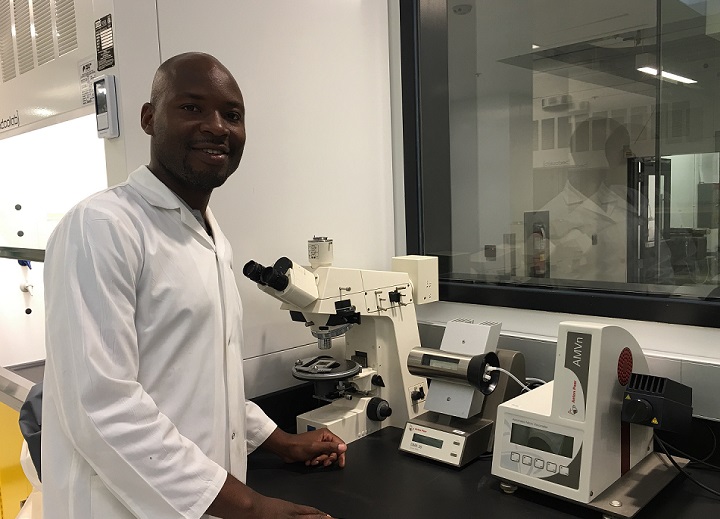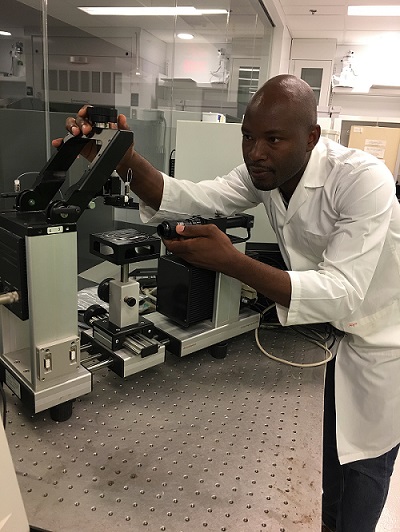
Research roots at the Mount
Martin Sichinga remembers the first time he saw snow. The Zambian native was in the library at Mount Saint Vincent University immersed in his chemistry textbooks when he looked up and the campus was filling with big, fluffy flakes. “It was very exciting,” Sichinga remembers. “It was very beautiful.”
Since 2007 snow has lost some of its allure. Chemistry has not. After graduating with his BsC from the Mount in 2011, Sichinga has gone on to earn his Masters at Acadia University and is currently completing his PhD at McGill.
Sichinga, who taught in Zambia before coming to Canada, had planned to return home after his studies in Nova Scotia, but those plans changed. “The more you try to read and learn, the more you discover. I found myself wanting to learn more,” says Sichinga.
While the focus of that learning has broadened within the field of chemistry – including environmental, analytical, computational and materials chemistry – the desire to create something to help his country and the world has remained constant. “I am designing a process to remove oil pollution from water,” explains Sichinga. “Water pollution is a big problem in Zambia.”
 Specifically, Sichinga is looking at ways to filter water to remove harmful bacteria from the pollution. He is testing a filtration system using cellulose, which can be obtained from the bark, wood or leaves of plants, that will allow clean water to pass through leaving toxic materials behind. “The focus is on green chemistry,” says Sichinga. “I want to use common materials that are beneficial to the environment.”
Specifically, Sichinga is looking at ways to filter water to remove harmful bacteria from the pollution. He is testing a filtration system using cellulose, which can be obtained from the bark, wood or leaves of plants, that will allow clean water to pass through leaving toxic materials behind. “The focus is on green chemistry,” says Sichinga. “I want to use common materials that are beneficial to the environment.”Although cellulose is not soluble in water, it can absorb liquid. Sichinga’s goal is to create a material, a membrane, that will enable the cellulose to pick up the oil much the same way a diaper works. To do that he is relying on research he did at the Mount with Dr. Chérif Matta. That work focused on computational chemistry, which uses computer simulation to assist in solving chemical problems. Today, says Sichinga, he is one of a handful of chemistry researchers with expertise in both computational and materials chemistry.
It’s a winning combination. “Computational modelling is used as a predictive tool and ensures the chemistry is ‘green’ before the materials are synthesized in the laboratory,” notes Sichinga. “It reduces the trial and error.”
Sichinga also credits his time at Mount with helping him to adapt to life in a country with snow. His mother, Catherine Nkonde (MHE ‘95), a graduate of the Mount’s Home Economics program, had recommended the University to him as a wonderful place to learn – and to make friends. “I didn’t know a single soul in Halifax when I arrived,” says Sichinga.
That soon changed. Someone recommended he join a sports team, and Sichinga began playing soccer. (“Badly,” he says.) This sport was part of his life at the Mount and while obtaining his Masters. Now he is coaching. “This helped me to make friends. I became connected to a community.”
Check out the stories of more Mount alum in Folia Montana, the University’s alumnae magazine.